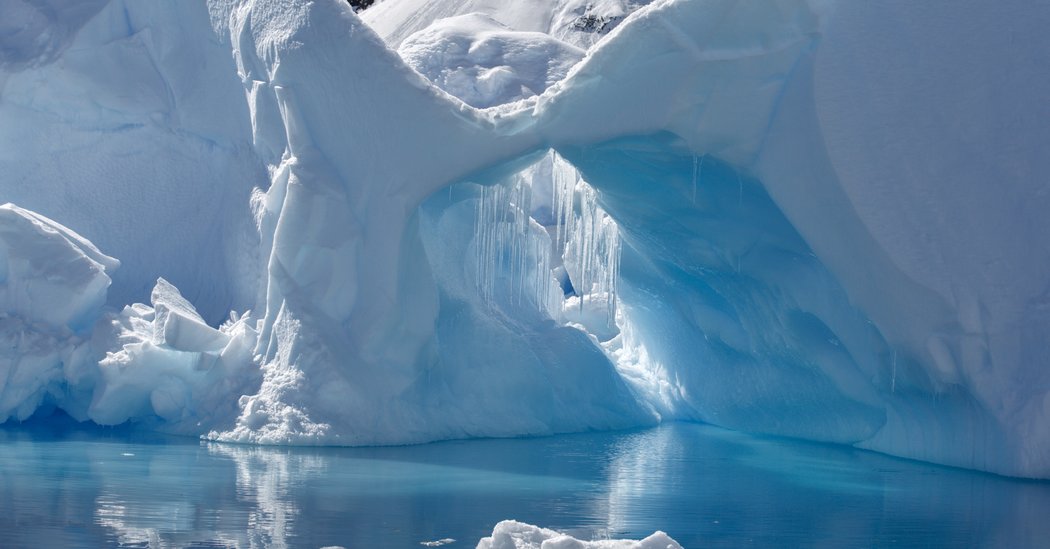Earth is continuously plowing through extraterrestrial dust. Tens of thousands of tons of the stuff, mostly from asteroids and comets, settles all over the planet every year. We are the shoulder to a universe of dandruff.
But even the faintest detritus has a story to tell. Recently, scientists analyzed dust collected from Antarctic snow and found an excess of radioactive iron. After ruling out contamination from nuclear weapons testing and other sources, the team concluded that the iron was produced by supernovas, fleeting explosions of stars more massive than the sun. This discovery suggests that stellar blasts might have rocked Earth and the rest of the solar system in the not-too-distant past. The results were published on Aug. 12 in Physical Review Letters.
Meteorite hunters are drawn to Antarctica because the space rocks, which are dark, stand out against the snow. Dominik Koll, a doctoral candidate in nuclear physics at the Australian National University in Canberra, appreciates Antarctica for other reasons: its remote location and desert climate, which ensure that whatever extraterrestrial dust falls from the sky remains relatively uncontaminated and undiluted.
In 2015, a colleague of Mr. Koll’s collected roughly 1,100 pounds of snow near Kohnen Station in Antarctica. The snow, which had fallen within the past 20 years, was shipped to Germany, where it was melted and filtered. Then, with an extremely sensitive mass spectrometer, Mr. Koll and his collaborators identified the compounds within the detritus.
The researchers were looking for a rare, unstable variety of iron containing 26 protons and 34 neutrons. This radioactive isotope, iron-60, is produced by supernovas.
[Like the Science Times page on Facebook. | Sign up for the Science Times newsletter.]
Think of these isotopes as mayflies or green bananas, said Brian Fields, an astrophysicist at the University of Illinois, Urbana-Champaign, who was not involved in the study. “They’re short-lived things.” That is a telltale sign they were made recently and nearby.
Iron-60 has been found on Earth in oceanic crust that is millions of years old and on the surface of the moon, indications that the isotope circulated through the solar system long ago. But iron-60 from supernovas has never been found in geologically young material; its discovery in relatively fresh snow would suggest that it’s still raining down on Earth.
Mr. Koll and his colleagues detected five isotopes of iron-60 in the filtered solids. These isotopes are far more elusive than any needle in a haystack: The scientists had to sift through more than 9 quadrillion other iron isotopes, most of them iron-56. “There are only two facilities in the world that achieve that sensitivity,” Mr. Koll said.
But it wasn’t yet time to celebrate. Iron-60 is sometimes created by processes other than supernovas: collisions between specks of dust and high-energy cosmic rays, nuclear weapons tests, the reprocessing of nuclear fuel, and nuclear accidents.
So Mr. Koll and his collaborators did some cosmic sleuthing. They analyzed manganese-53, another isotope produced when cosmic rays slam into dust particles. The ratio of iron-60 to manganese-53 in dust-rich meteorites is a known figure, and it is about 160 times lower than the ratio the researchers measured in the Antarctic snow. Cosmic rays weren’t the culprit, Mr. Koll said: “This means there’s something else.”
His team also ruled out human sources. Fallout from nuclear tests, which began in the mid-20th century, is insignificant in Antarctica, Mr. Koll and his colleagues concluded. Nuclear reprocessing facilities are in the Northern Hemisphere and wouldn’t leave much trace so far south. And major nuclear accidents, like the one in Fukushima, Japan, in 2011, have not released significant amounts of iron-60, the researchers concluded.
That left one or more supernovas, perhaps the same ones that blanketed Earth and the moon in iron-60 millions of years ago. “Our data indicates there is still iron-60 around our solar system,” said Mr. Koll.
The next step in the research is to look for iron-60 in ice that is older than snow but younger than oceanic crust, Mr. Koll said. That would help determine whether the drizzle of supernova debris has been continuous in the recent past. If it has been, iron-60 might have been ejected directly into the solar system by a stellar blast. If not, the region of space the solar system is currently passing through might be the source of the iron-60.
Either scenario would provide useful insights into the dynamics of supernova explosions, Mr. Koll said: “Both would be spectacular findings.”
Source: Read Full Article




